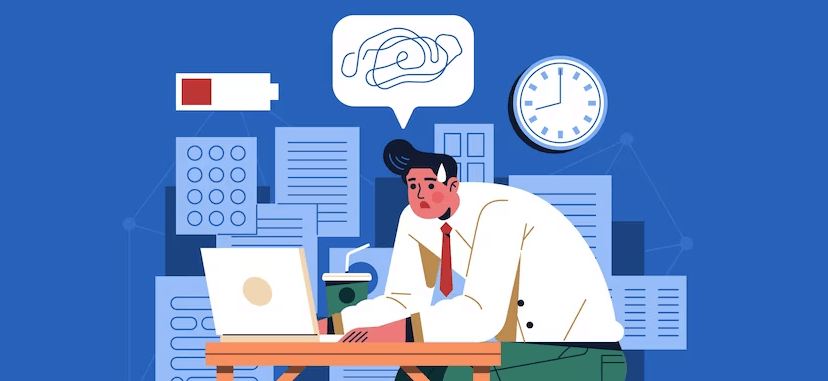
Click the button to start reading
The Art of Improvement: Managing and Motivating Underperforming Employees
Dealing with an underperforming employee is one of the toughest challenges a manager can face. It’s like navigating a minefield, only this time, it’s a minefield of delicate egos, workplace relationships, and company productivity.
Let’s be honest, nobody wakes up in the morning looking forward to addressing an employee’s subpar performance.
It’s a sticky situation that can feel personal, uncomfortable, and fraught with potential backlash.
But here’s the deal: as much as we might want to wish it away, underperformance is not an issue that resolves itself.
The productivity of your team, the morale of your other employees, and indeed, the bottom line of your organization, hinge on everyone pulling their weight. That makes addressing underperformance not just necessary, but absolutely vital.
If left unattended, one underperforming employee can become an increasing liability that infects the entire team.
Dealing with underperformance is not just a part of the job; it’s an opportunity for growth—for your employee, for you as a manager, and for your team as a whole.
Let’s delve into this issue, navigate its complexities, and find the best way forward.

Identifying an Underperforming Employee
Identifying an underperforming employee is not as straightforward as it might seem. It’s not just about missed deadlines or sloppy work—though those are certainly significant red flags.
It’s about recognizing patterns of behavior that hinder productivity and disrupt team cohesion. This isn’t a witch hunt, nor is it an exercise in micromanagement. It’s about being observant, attentive, and fair in your evaluations.
An underperforming employee may exhibit a variety of tell-tale signs. Chronic tardiness or unexplained absences can be indicators. As can a persistent lack of engagement in team meetings or a tendency to shirk responsibility.
But let’s be clear: We’re all human, and we all have off days. What we’re looking for here is a pattern, not a one-off.
For instance, consider a team member who consistently fails to meet their deadlines, causing a ripple effect of delays throughout the team. They always seem to have an excuse ready—too much on their plate, unclear instructions, or unexpected obstacles.
While these may be valid reasons on occasion, an ongoing pattern suggests that the issue is not external circumstances but the employee’s performance.
Or, take the example of an employee whose work is frequently riddled with errors. They seem to lack attention to detail and show little initiative in improving their work. It’s not just about the quality of their work—it’s about their seeming indifference to the impact of their mistakes on their colleagues and the project at large.
This isn’t about creating a culture of blame or surveillance.
It’s about fostering a culture of responsibility and excellence. It’s about ensuring everyone on the team is able to contribute their best work.
After all, we’re all in the same boat, and we all need to row together. So while it’s important to identify underperformance, it’s equally important to do so with a fair and constructive mindset.

Reasons Behind Employee Underperformance
It’s easy to point the finger at an underperforming employee and label them as lazy, uncommitted, or even incompetent. But a good manager needs to understand that underperformance rarely happens in a vacuum.
It’s often symptomatic of deeper issues—be they personal, professional, or a complex blend of both.
Let’s discuss some common reasons for underperformance. While this list isn’t exhaustive, it can offer some valuable insight:
- Unclear expectations: An employee might struggle if they don’t fully understand their role, the project requirements, or what’s expected of them. It’s crucial to provide clear, precise instructions and goals.
- Lack of skills or training: Sometimes, an employee underperforms simply because they don’t have the necessary skills or training to execute their tasks effectively.
- Personal issues: Stress, health problems, or turmoil in an employee’s personal life can spill over into their work. As leaders, we must approach these situations with empathy.
- Overwork: Let’s face it, burnout is real, and it can severely impact performance. It’s crucial to ensure employees aren’t overloaded with work.
- Lack of motivation or engagement: When employees aren’t motivated or don’t feel connected to their work, their performance can suffer. This might stem from a lack of feedback, insufficient challenges, or a poor fit with the company culture.
Now, let’s talk about excuses.
It’s crucial to differentiate between a legitimate reason and a cop-out. For instance, if an employee is consistently blaming others for their mistakes or claiming they didn’t have enough time to complete a task, it’s time to have a serious conversation. It’s one thing to encounter a legitimate obstacle—it’s another to abdicate responsibility.
However, it’s equally important not to dismiss an employee’s reasons for underperformance out of hand. Sometimes what seems like an excuse is actually a cry for help.
As leaders, it’s important to listen, empathize, and probe deeper if necessary.
- Are they struggling with a heavy workload?
- Are they having trouble understanding the task?
- Are personal issues affecting their work?
But be aware: empathy isn’t the same as leniency.
It’s about understanding the situation, not justifying poor performance. And in the end, while you can and should support your employees, it’s also important to hold them accountable. In the end, we’re all professionals, and we all have a job to do.

Initial Conversation with Underperforming Employee
We’ve all heard the saying, “communication is key.” It’s a cliché because it’s true, and it’s especially crucial when you’re dealing with an underperforming employee.
How you handle that initial conversation can set the tone for everything that follows. It’s a balancing act: you need to address the issue head-on, yet in a manner that is respectful, understanding, and constructive.
When it comes to how to talk to an underperforming employee, here’s a good place to start:
First, prepare for the conversation. It’s not enough to have an idea of what you want to say; you need to have concrete examples of their underperformance.
Vague statements like “you need to improve your work” aren’t going to cut it. Be ready to provide specific instances where their performance fell short.
Second, be honest but tactful. It’s essential to be direct about the issue at hand, but that doesn’t mean you need to be harsh or blunt. Frame your critique in a positive light, focusing on their potential for growth and how improvement can benefit them. Remember: your goal isn’t to chastise them—it’s to help them grow.
Lastly, make it a two-way conversation. This is where the questions to ask an underperforming employee come in. Here are some that will be useful:
- Can you help me understand what’s been happening with X task/project?
- What challenges have you been facing that might be affecting your performance?
- Are there any resources or support you need that you’re currently not receiving?
- How do you feel about your workload? Is it manageable?
- What are your personal goals, and how can we align them with your role better?
These questions not only help you understand their perspective but also signal that you’re there to support them. You’re not just their boss—you’re their ally. But remember, while you’re there to listen and understand, you’re also there to guide them towards improving their performance.
You’re not just seeking to understand the “why” behind their underperformance; you’re also paving the path for improvement.

Strategies to Manage an Underperforming Employee
Leaders are often faced with the complex task of managing underperforming employees. This demands patience, understanding, and strategic acumen. Tackling underperformance proactively and constructively remains a challenging yet rewarding aspect of modern leadership.
Tailoring Your Approach
Each employee is unique, and so are the circumstances surrounding their underperformance. Leaders must discern the root cause of underperformance, as the response should be proportional to this cause.
For instance, if an employee is struggling with a personal crisis, a leader’s approach should be empathetic and flexible.
On the other hand, if a skills gap is the culprit, the leader might consider offering additional training or resources. The solution to underperformance is not one-size-fits-all; it requires situational awareness and adaptability.
The Power of Coaching
Coaching is an invaluable tool in a leader’s arsenal to address underperformance. The first step in effective coaching involves setting clear expectations, ensuring the employee fully understands their role and the associated performance standards.
Regular, constructive feedback forms the backbone of this process, promoting continuous improvement.
Instead of merely prescribing solutions, the focus of coaching should be on guiding employees towards self-discovery and self-improvement. This process encourages self-reflection, allowing employees to identify their strengths and areas for growth.
As they devise their own solutions, they are not just improving their current performance, but also developing critical problem-solving skills that will serve them throughout their careers.
Motivating an Underperforming Employee
Motivating an underperforming employee requires a delicate balancing act. While every employee appreciates feeling valued, individual motivational factors can vary widely.
Actions like recognizing efforts, expressing appreciation, setting goals, rewarding progress, and offering opportunities for growth can effectively enhance motivation.
Leaders need to understand each employee’s unique motivational drivers. Whether it’s recognition, responsibility, or challenge, knowing what inspires an employee can help reinvigorate their passion for work.
It’s important to note that performance improvement doesn’t happen overnight.
Leaders should remain patient throughout the process, watching for incremental progress and celebrating improvements, no matter how small. This approach creates a positive environment where underperformance is managed effectively, fostering a culture of growth and continuous improvement.
Creating a Performance Improvement Plan
In the realm of employee performance management, few tools are as potent as the Performance Improvement Plan (PIP).
It’s not just a document, it’s a roadmap to improvement, a lifeline for underperforming employees, and a guidebook for leaders aiming to navigate the choppy waters of employee underperformance.
A Performance Improvement Plan, when properly implemented, can be a game-changer. It serves as a structured, formal plan that outlines areas of improvement, sets new performance goals, and provides a clear timeline for achieving these objectives.
A PIP is not meant to be punitive, but rather a supportive tool to help an employee overcome performance issues.
The beauty of the PIP lies in its dual role as both a diagnostic and therapeutic tool. It helps leaders identify and articulate specific areas of underperformance while also providing clear steps for employees to improve.
A well-structured PIP serves as a powerful communication device, ensuring that both the leader and the employee are on the same page regarding performance expectations and the path to improvement.
Crafting an effective PIP involves a series of strategic steps:
- Identify the areas of underperformance: The initial step in crafting a PIP is to clearly outline the areas where the employee is not meeting expectations. This is not about blaming, but about ensuring clarity around the issues at hand.
- Set measurable and achievable goals: The plan should include precise goals that align with the employee’s role and the organization’s expectations. These should be measurable and achievable to provide a clear path to improvement.
- Establish action steps: For each goal, specific actions should be identified that the employee can take to achieve it. The more detailed, the better.
- Provide a timeline: It’s essential to include a timeline in the PIP, so the employee knows when they are expected to meet their targets. This also provides a structure for tracking progress.
- Outline the available support: The PIP should also clarify what kind of support the employee can expect from management during the improvement process. This could be coaching sessions, additional training, or other resources.
- Align the PIP with prior discussions: The content of an effective PIP should not be a surprise to the employee. It should reflect the discussions held with the employee about their performance and the agreed-upon need for improvement.
While the creation of a PIP is no small task, it is a vital investment in the journey to improved performance. When done right, it serves as a roadmap for improvement, a tool for communication, and a beacon of hope for employees who are committed to improving their performance.
Conclusion
Managers should strive to create an environment where underperformance is less likely to take root. This could involve providing regular feedback, nurturing an atmosphere of continuous learning, and ensuring that each employee’s skills and tasks align.
Managing underperformance is not an easy task, but it’s an essential one. As leaders, it’s our responsibility to guide our team members towards success. So, while the conversations may be difficult and the process arduous, the end goal — a highly motivated, high-performing team — is worth the effort.
Through it all, keep in mind the role of the leader isn’t just about maintaining performance metrics or meeting the bottom line. It’s also about people development. It’s about unlocking potential, fostering growth, and cultivating success in every team member. In the end, that is what truly defines great leadership.
















